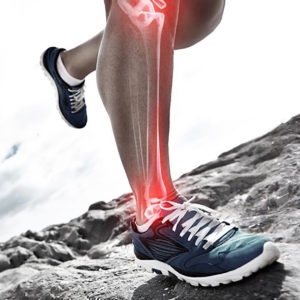
Building Resilience
December 8, 2019
Improving Your Performance
December 21, 2019
Welcome back for the third and final entry for our posts on bone stress injuries (Click here for the first entry and here for the second entry). To wrap up, I want to talk a little bit about the way we can categorize the location of a suspected stress fracture. After identifying a bone stress injury, I then want to know the location so that we can come up with a better prognosis and plan of care.
As with many musculoskeletal injuries we deal with, early loading, or early rehabilitation, is often the best option for conservative treatment. Rarely will we prescribe complete rest unless there is an acute healing phase. Even then we promote systemic stress to facilitate your body’s healing process. Your body produces lots of good stuff when you exercise properly, and your cardiovascular system will bring all that good stuff everywhere. When it comes to your bones, it’s a similar concept. We then tackle nutrition and supplements to ensure the body has what it needs to recover.
Remember, stress fractures are somewhat common injuries that result in an “overuse” fashion. Your body will normally repair the bones from normal and usual stresses the same way your muscles get stronger and more resilient from lifting weights. But if the stress becomes too much and outweighs the rest, and you disrupt the reparative mechanisms then it will start to breakdown. What happens after the breakdown starts depends on where the breakdown occurs. This brings us to our “High Risk” sites and “Low Risk” sites for BSIs.
The main difference between the two types of stress fracture is that Low Risk (LR) sites are less likely to turn into a more serious injury whereas High Risk (HR) BSIs do carry an inherent risk to progress into something much worse which may require a more involved recovery. Often LR sites heal completely with conservative management while HR sites may require surgery and have a higher chance of nonunion or incomplete healing. When a bone stress injury progresses, it is not a pretty picture. For the active individual, this will get frustrating and at times, can deal a big blow to future activity. Again, one of the reasons we try and promote early action with symptoms for ANY injury. Face it head on, acknowledge your body is telling you it wants to heal, and then spoil it so you can come back better, faster, and stronger.
Low Risk BSI sites are the femoral growth plates, the middle of your shin bone, the outside ankle bone in your lower leg, the first four long bones of your foot, the heel, and your pelvis. These are commonly injured sites especially for someone who does a lot of jumping, or even kicking like martial arts. Typically we see good progress and can resume weight bearing or loading activities within 4-6 weeks.
Our High Risk sites are the neck of the thigh bone (hip), the knee cap, the growth plate of your shin bone, the inside ankle bone, two of the tarsal bones in your foot, the big bone in the middle of your ankle joint, the outside long bone of the foot, and the small bones under your big toe. I bet you didn’t know you had two tiny floating bones under your big toe. Google “sesamoid bones big toe” and you’ll see your new friends. For HR BSIs, I like to play it safe. Once imaging confirms healing, and medical clearance is granted then we can create a plan of care to resume weight bearing work. I haven’t seen many come back in less than 6-8 weeks, although some literature mentions 4-6 for some pathology.
It’s important to remember this does not mean resume previous activity level in 4-8 weeks, it means we have to find your appropriate entry point back into weight-bearing activities and progress from there. A 10-20% increase in total structure loading is boring initially but will ensure proper progressions and mitigate risks. The best predictor of injury is, and always will be, previous injury in that same area. For those with a history of BSI, we’ll try and prescribe a rough number of 40-60 “ground contacts” which are some sort of intelligent plyometric loading per day. This falls far short of your typical bootcamp style cardio class which can see upwards of 350-400 ground contacts per hour. It’s all about mitigating risk with repetitive stress injuries.
I’ll leave you with a neat fact, women over the age of 65 who walk minimum 4 hours a week have a 41% reduction in hip fracture risk than those women over the age of 65 who walk less than 1 hour a week.
Stay healthy my friends! Cheers.





